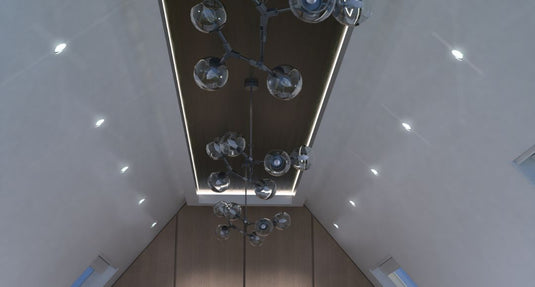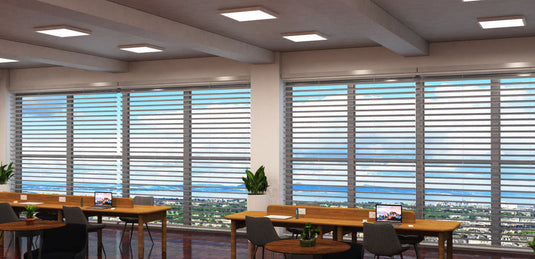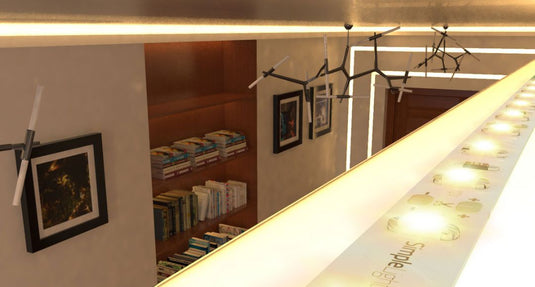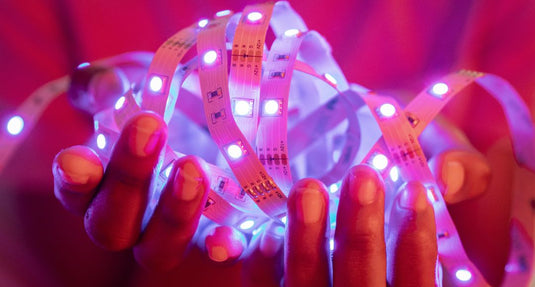When you mix both water and electricity, they will never be a good combination in any situation that arises. Water, when mixed with electricity can be a cause of deadly shocks and life-threatening conditions.
On the other hand, if you are careful around water mixed with electricity - it still isn’t safe for your lighting around the household. The solutions to this are having waterproof LED lighting, whether that be for your LED downlights, LED floodlights, LED strip lights, etc.
However, full waterproof LED lights are different from water-resistant lights whereby waterproof LED lights have the design to sustain and control any amount of water spray - whereas, water-resistant lights can only work well with small amounts of exposure to water.
So, not only can LED lights offer numerous benefits for users such as conserving energy in people’s households or properties, but they can work well - despite being exposed to any types of particles (solid, liquid or gas).
What are IP Ratings?
IP (which stands for ‘Ingress Protection’) Ratings are defined to show levels of sealing effectiveness of each electrical enclosure against any type of intrusions, such as dirt, water and any type of moisture.
Every type of LED light will come with a different dust ingress protected rating and liquid ingress protected ratings - which will all come in dissimilar measurements of protection. This is based on how well a LED light product will compete against liquid (water) and solid (dust, dirt, etc) items and objects.
Each IP rating is made up of two numbers, with the first number (0 to 6) representing the IP rating which tells you about the resistance against the solid objects. Whereas, the second number, which will be the number 0 to 8 insinuates the protection against water (liquids). But, why are IP ratings so important in the lighting industry?
Why Are IP Ratings Important?
When you have lights in your garden or just outside in general, the external influences that will affect these objects daily will be very common amongst any property or building. For safety’s sake, this is why a lot more attention is paid to the outdoor lighting as they’re exposed to more damage.
When lights are placed outdoors there could be several factors that could cause damage to your lighting. Deliberate tampering, accidental falls or damage from tools, wildlife, etc can blemish and malfunction many different forms of your outdoor lighting.
Therefore, if your outdoor lighting doesn’t have the correct level of protection against all these small details - it could cause you to pay more than you need to. But, if you were protected from touch, protected from tools and low-pressure water - this will give you a good chance of your outdoor lighting surviving.
An example would be an LED floodlight being placed on the floor to light up your garden and with minimal amounts of bad weather or someone accidentally kicking it - it may be completely ruined. With the IP ratings varying on different forms of lighting, some may be more susceptible to more damage than others - so when you purchase your outdoor lighting, this should be a part of your purchasing decision.
IP Numbers Explained
Both of the numbers have a specific meaning when it comes to protection against certain factors. The first number indicates the degree of protection against moving parts, as well as any enclosed equipment from foreign bodies.
The second number shows the protection level against certain forms of moisture, such as drips, submersion, water and many more!
IP40 Waterproof Rating
First of all, this rating is for the LED lights that are mapped out to go in enclosed fixtures (keep a tight seal around the light source). The IP40 light should never be placed outdoors unless they have a strong seal around the fixture. However, even in areas of high pressure, humidity or other harsh conditions and components - it will still be damaged. Apart from that, it will usually be fine in regular indoor environments.
IP54 Waterproof Rating:
Every LED light with the IP54 gives a fully dust protected formula - but in contrast, for the liquids, it will only slightly protect itself against splashing water only. This is usually a commonality within LED light bulbs.
IP64 Waterproof Rating:
With the first digit being 6 in the IP64 waterproof rating - it will give very strong protection against solid particles. For example, dust, dirt, etc will not affect this LED light at all. Subsequently, with the second digit being 4, similar to the previous IP rating will only be protected against splashing water.
By numbers and stats, this is the highest rating LED corn light bulbs can get due to the bulb always having to be screwed into a base and this base cannot be sealed at any point.
IP65 Waterproof Rating:
With the commercial and domestic scene, the IP65 waterproof rating is meant to be the most perfect out of all. This is down to it giving complete protection against foreign bodies and pressure water jets - meaning that even water coming out of a 6.3 millimetres nozzle will not affect the LED light.
Anytime you’re out looking for outdoor LED light bulbs for your household, property or building - they should always have been rated by the IP65.
IP67 Waterproof Rating:
Every LED light with the rating IP67 will give full protection against a foreign object - which is similar to the previous two IP ratings. But, in addition to that, the difference between these IP ratings lies in the protection against liquids. If you’re in a wet country, this may be something you consider for your outdoor lighting - because water will not affect the LED light bulb.
How To Know Which IP Rating Is Best?
As you may know now, the highest-rated IP of a bulb will be the most effective. For example, a bulb with an IP rating of 68 would mean it is completely safe from liquid or solid influences. In contrast, an IP rating of 11 would mean that the light would be more suited to an indoor environment and be barely protected from external environments. Bulbs without an IP rating at all will and should not be used in any wet or dusty environments.




